Tropical forests are the “lungs” of our planet, the most precious treasure, the “big pharmacy of the Earth”. For many years it was believed that they produce enormous amounts of oxygen, but this turned out not to be the case, but the humid climate contributes to flawless air filtration and purification from pollution. A lot of medicinal plants grow in this zone, which have been used in folk and official medicine. Where tropical forests grow, a huge number of birds, predators, artiodactyls, amphibians live, they all somehow get along in one territory, surprising travelers with their large numbers.
Distribution of tropical forests
It will immediately become clear where tropical forests grow, if you explain that they kind of “encircle” the planet along the Equator. They are located in the humid equatorial, dry tropical, temperate, representing a clear line, interrupted only by mountains and oceans. Vegetation changes depending on air temperature and rainfall. Rainy areas are covered with evergreen flora, drier regions are characterized by deciduous plants, and then there are savannah forests. In both South America and Africa, monsoon forests are located in the west, savannah forests in the east, and equatorial forests in the middle.
Forest levels
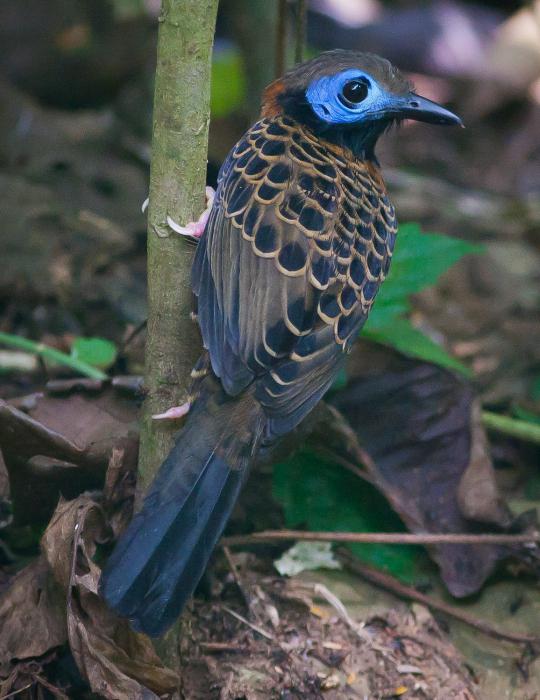
The description of the rainforest will be more understandable if it is divided into tiers. There are four main levels. The uppermost one is evergreen trees up to 70 m tall, their green caps are mostly only on top, but below they are bare trunks. These giants can easily withstand hurricanes, temperature extremes, sheltering the rest of the tiers from bad weather. The main hosts here are eagles, butterflies, bats. Next comes the canopy of the forest, consisting of 45-meter trees. The level of crowns is considered the most diverse, about 25% of all insect species live here. Scientists agree that 40% of the species of all plants on the planet are located on this tier, although it has not been fully studied.
This is followed by the middle level, called the undergrowth, snakes, birds, lizards live here, the number of insects is also huge. The forest floor layer contains animal remains and decaying plants. Such stratification is more characteristic of the humid tropics. For example, the selva - the forests of South America - is divided into only three levels. The first is grass, low plants, ferns, the second is reeds, low shrubs, young trees, the third is 40-meter trees.
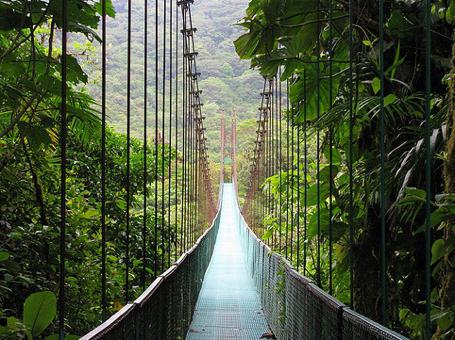
Where tropical forests grow depends on the species of flora and fauna that prevail in them. For example, mangroves are common in equatorial and tropical latitudes in the tidal zones of sea coasts. Plants grow here that are accustomed to do without oxygen and feel great in salty soil. Their roots create an excellent habitat for oysters, crustaceans, commercial fish species. On the slopes of the mountains in the area of fog condensation grow moss or fog forests, characterized by low night temperatures.
Arid regions are dominated by savannah and rainforest, but dry. The plants here are evergreen, but xeromorphic and stunted. In the regions of the equatorial and tropical zones with a variable climate, variable-moist forests grow, characterized by deciduous crowns and a small number of lianas and epiphytes. They are found in South America, Africa, Sri Lanka, India and Indochina.
Rainforest climate
In humid tropical forests, the air temperature ranges from 20 ° C to 35 ° C, it rains here almost daily, so the humidity is kept at 80%, and in some regions it reaches 100%. In the subtropics, there is no pronounced seasonality, the temperature is characterized by stability. On the slopes of the mountains, where fogs are observed, it is warm during the day, and at night a sharp drop to 0 ° C is possible. The climate of tropical forests varies depending on the belt. In the tropics, high temperatures and low humidity, at the equator there is a lot of moisture and very hot, and in the subequatorial zone, the weather depends on the monsoons.
tropical trees
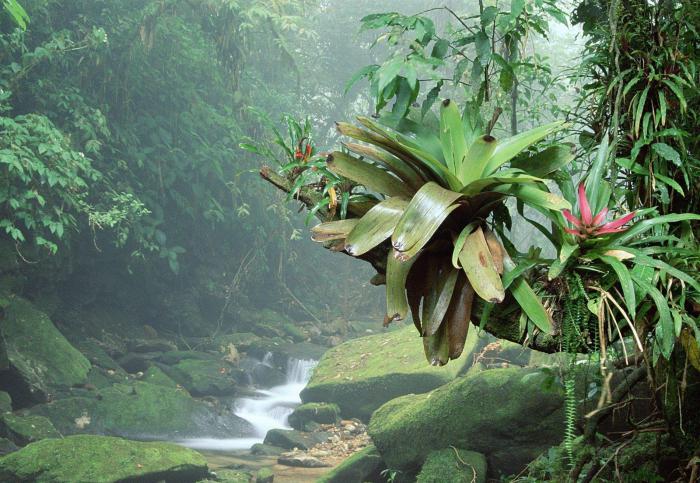
Rainforest trees are very different from temperate trees. The peculiarity of their development is influenced by weather conditions, because there is no seasonality at the equator, it rains almost daily, and the air temperature is 25-35 ° C. If in Russia giants grow over several centuries, then 10-15 years are enough there. Each type of tree sheds leaves at a strictly defined time, it can be once every six months, once every 2-3 years. They also bloom when they want, many representatives of the flora delight with flowers once a decade. The trees mostly have large, leathery leaves that are tough enough to withstand heavy torrents of rain. More than 600 types of bamboo, chocolate cola, marang, jackfruit, mango, etc. grow in the tropics.
exotic shrubs
The question of whether a shrub layer exists in tropical forests remains rather controversial. It exists in the subtropical and temperate zones, but not in the equatorial zone. Of course, there are representatives of shrubs there, but there are very few of them and they will not create their own level. Together with them, herbaceous phanerophytes grow, keeping the trunk from one to several years, and undersized trees. This includes representatives of the families of scitamine, marat, and bananas. Most of the shrubs belong to the dicotyledons, their leaves are large, but tender.
Rainforest grasses
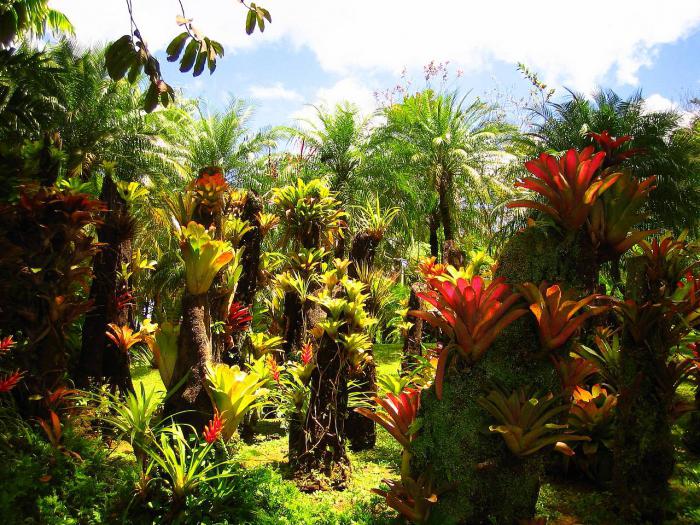
Incredibly beautiful, bright birds with an unusual appearance live in virgin forests. Each separate part of the world boasts some kind of its own kind of birds. For example, francolins live in the tropics of Asia, in appearance they resemble partridges, only slightly larger. They run fast, so in case of danger they do not take off, but fly away with all their might. Bush chickens, pheasants, royal peacocks also live in the forests. In the American tropics, you can meet tinama - a poorly flying bird with short but very strong legs. Well, how can one not remember the bright, cheerful and talkative parrots, without which the tropics are not tropics. In addition, motley pigeons, trogons, woodpeckers, flycatchers, and hornbills live on the equator. Hummingbirds, tanagers, rock cockerels, cotingas and many others are found in the Amazon forests.
Animals
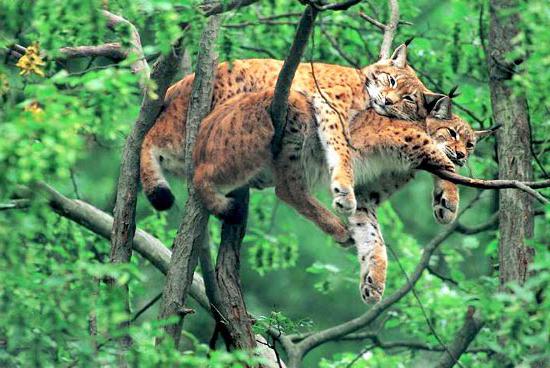
The fauna of the tropical forests is striking in its diversity and richness of species. The greatest number is represented by a group of monkeys that live high in trees and in impenetrable thickets. The most interesting of them are cebids, marmosets and arachnids of the family. Marmosets are characterized by a very small size, they reach no more than 15 cm in length, cebids boast a long tail with which they hook on branches, and spider monkeys have flexible and long limbs.
But the fauna of the tropical forests is not limited to monkeys alone; anteaters, sloths, and porcupines also live here. Predators are dominated by felines - jaguars, jaguarundi, ocelots, panthers, and from the canine family - bush dogs. There are also ungulates - tapirs, sharp-horned deer. Tropical forests are also rich in rodents - opossums, marsupial rats, bats, agoutis.
Amphibians of the tropics
Large and reptiles are also characteristic of the rainforest. Photos of exotic snakes, frogs, crocodiles, chameleons, lizards are no longer considered a rarity. Amphibians are found in all parts of the world, but tropical rainforests are the most abundant because they are attracted to warmth and moisture. At the equator, they live not only in water, but also on trees, in leaf axils, in hollows. Salamanders live in the tropics, many poisonous snakes, water anacondas and land boa constrictors are widespread.
Insects
Looking at what animals live in the rainforest, we can assume that the insects here are no less bright, unusual and dangerous. The tropics attract these small creatures with warmth, high humidity and a wide variety of food - animal remains, numerous plants. At the equator, you can find bees and wasps that are familiar to us, only here they differ in larger sizes and bright, shiny colors. Among them there are representatives with long legs, blue wings and a large body, they are able to tame large beetles and spiders. On many shrubs there are swollen trunks - these are ant nests. Ants in the tropics protect plants by eating leaf-eating insects.
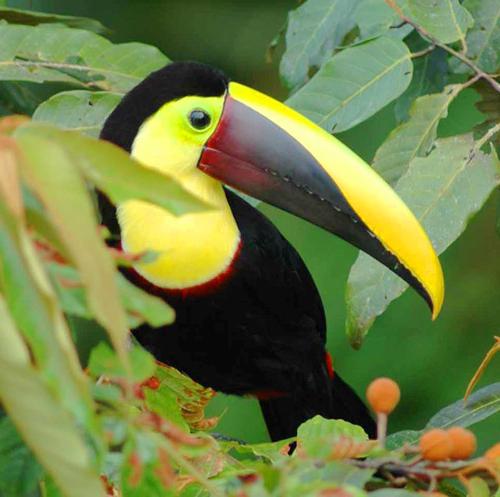
Beetles do not play a significant role in the life of tropical forests, but every traveler will be fascinated by their diversity and diversity. These insects are a natural decoration of this godforsaken area. Of course, one cannot but recall tropical butterflies, only in South America there are more than 700 species of these beautiful creatures. Animals and plants of tropical forests represent a special world unknown to people. Researchers annually make their way deep into the thickets to lift the veil of secrets that this area keeps, to find new representatives of flora and fauna.
